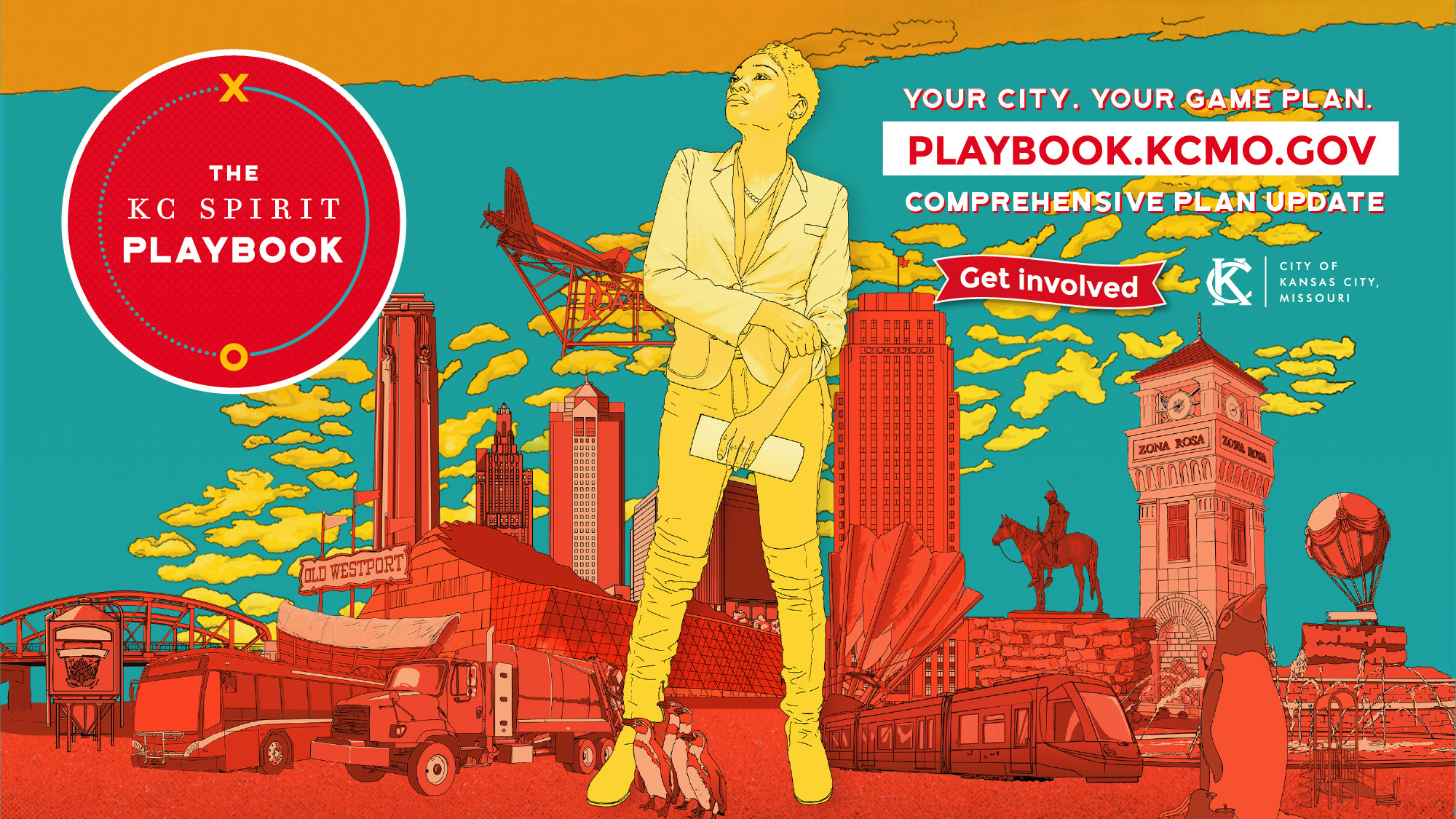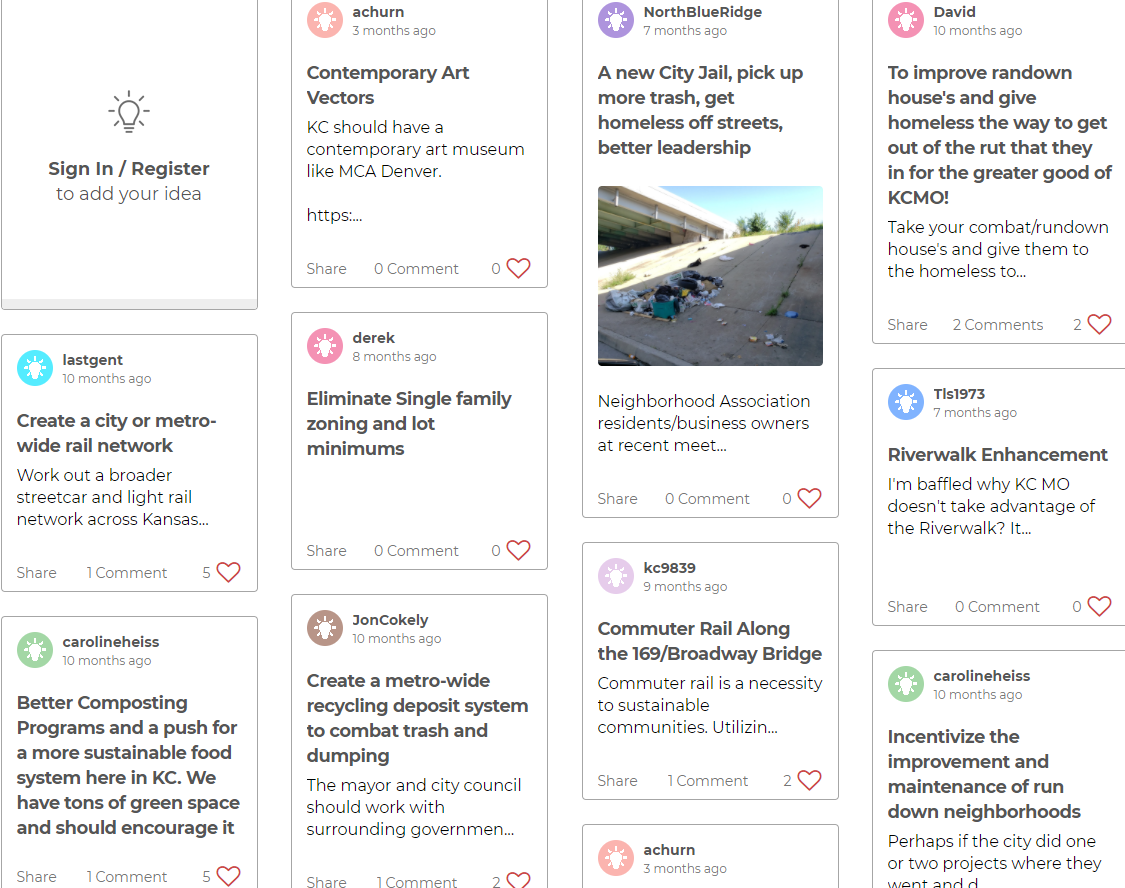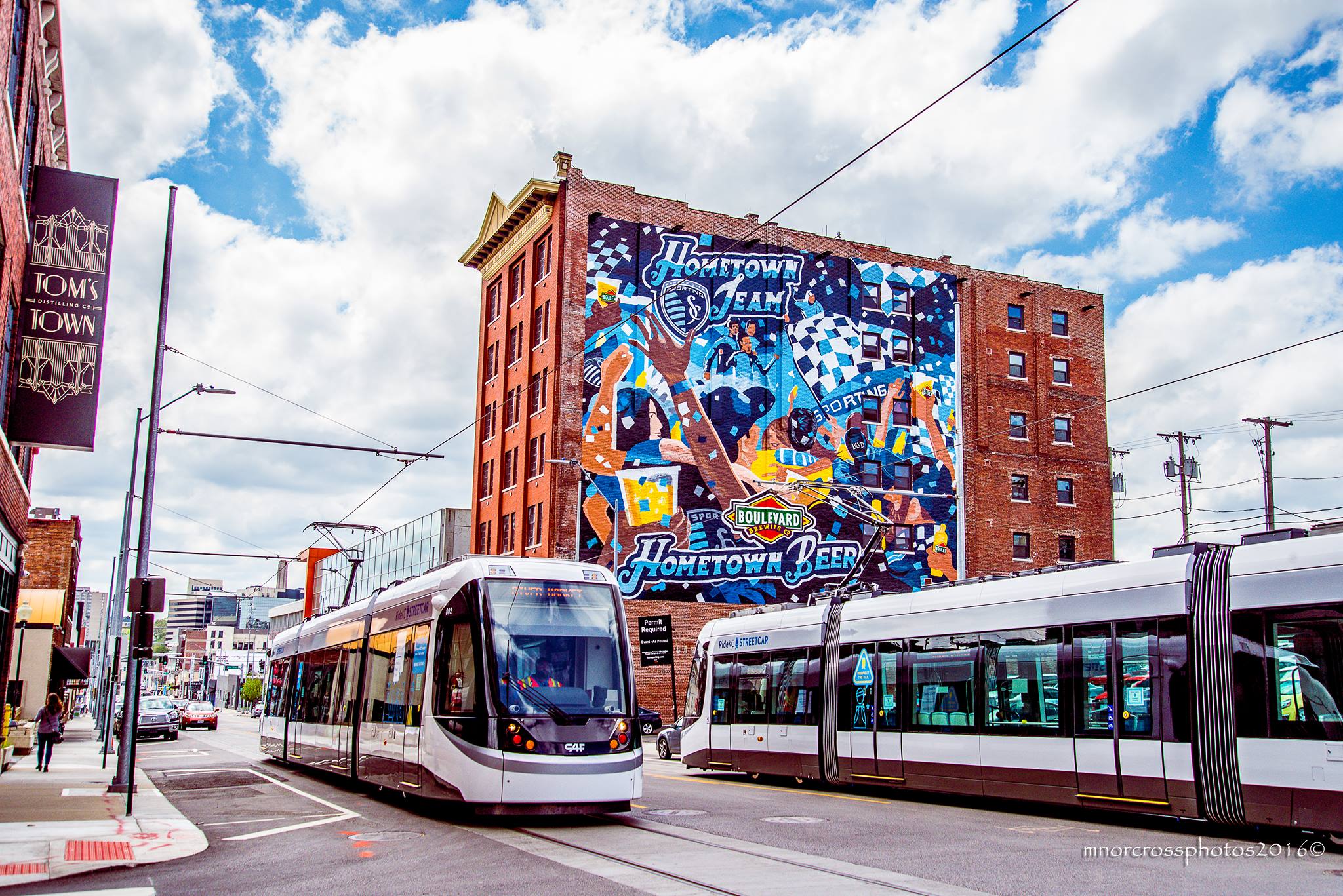2021 All-America City Finalist – Kansas City, MO
A surge of investment in arts, culture, transportation, and the downtown core has resulted in a thriving Kansas City, attracting an influx of young professionals and industrial growth in the science, technology, and health care fields. However, the benefits of these improvements have not been realized by all residents. As downtown booms, the city’s east side, primarily comprised of low-income and residents of color, has experienced continued disinvestment, resulting in a dramatic impact on the quality of life and life expectancy. As detailed in the featured projects, a strong core of civic leaders and public servants are fighting tirelessly to create a community that is more resilient and equitable for all.
Comprehensive Plan Update
In early 2020, Kansas City’s City Planning and Development (CPD) department began an update to the city’s comprehensive plan. The city’s current plan has helped make the city what it is today, but it failed to represent the interests of all communities. The update, titled the KC Spirit Playbook, intends to apply an equity lens to development in Kansas City.

Launching in 2020 with planned community engagement events, the COVID-19 pandemic forced CPD to pivot to mostly virtual events, highlighting the KC Spirit Playbook website as its crown jewel. The website allows residents to leave their opinions on key topics through participation in forums, polls, and other activities. The Playbook website asks residents to sign up with their zip code, so it tracks where in the city residents are participating.
CPD has promoted the Playbook website at 70 virtual events and through inserts in water bills, and messaging on billboards, buses, and windows of shops and restaurants.
 Thus far, the KC Spirit Playbook website boasts nearly 20,000 site visits, with visitors participating in forums, polls, and surveys.
Thus far, the KC Spirit Playbook website boasts nearly 20,000 site visits, with visitors participating in forums, polls, and surveys.
Data collected by the Playbook has revealed that most residents participating online live around the downtown area. This underscores the need to engage communities outside of the central business district. Low-income residents on Kansas City’s east side are a high priority group to engage through this process, so CPD has hired a consulting firm to create an engagement strategy for hard-to-reach residents. The firm will help CPD meet residents where they are to learn their unique perspective on life in Kansas City and shape land use and development policy to meet their needs and improve their quality of life.
Kansas City Streetcar

The Kansas City Streetcar is a unique case of successful and meaningful private-public partnership. In 2012 the city and the Port Authority of Kansas City jointly filed for a Downtown Transportation Development District (DTDD), for which the voters approved and authorized a sales, property, and surface parking tax to build and operate a downtown streetcar system. With the funding system approved, the Kansas City Streetcar Authority (KCSA) was formally established, including resident and business representatives. The City of Kansas City, DTDD, and the KCSA form a tri-party agreement which details the funding, design, construction, and ongoing operations and maintenance of the streetcar system. The city owns and controls the KC Streetcar while the KCSA is a not-for-profit formed for the purpose of managing, operating, and maintaining the streetcar.
KC Streetcar officially began operations on May 6th, 2016 and has maintained its free service throughout the COVID-19 pandemic, operating at reduced-capacity with safety enforcements such as social distancing and required face masks. The Streetcar route connects all downtown neighborhoods with 16 platform stops and 2 miles of track. Along the streetcar route there are electronic signs that give real-time information about arrival time, service interruptions, and other pertinent information. The popularity of the Streetcar has led to the approval of two extensions with funding mechanisms established via grant and voter-approved taxation.

In 2016, 97% of businesses along the KC Streetcar line credited the streetcar with having a positive impact on their business and 80% have experienced a positive change in revenue. Additionally, 81.6% and 98.4% of weekday streetcar riders indicated they were “Very Satisfied” or “Satisfied” with the service.
Life Expectancy
Kansas City is still a largely segregated city. White residents typically live west of Troost Avenue, while people of color largely inhabit the neighborhoods to the east. This built environment was intentionally shaped by segregation and discriminatory practices perpetuated by the real estate industry and federal, state, and local governments of the past.
The repercussions of these practices still shape quality of life and community health today. Residents in these neighborhoods are often isolated from opportunity, investment, and public services. As a result, they fall victim to poor social determinants of health and experience lower life expectancies than their white counterparts.
In 2016, the Health Department identified the six zip codes with the lowest life expectancies and set out on an aggressive campaign to decrease the gap between the expectancies in the highest and lowest zip codes. One of the primary steps in this direction was the establishment of a Community Engagement, Policy and Accountability (CEPA) division.
CEPA has hosted two LifeX Summits, a convening of representatives from all 20 city departments, with the goal of breaking silos and collaborating to develop tangible strategies to increase life expectancy and decrease expectancy inequities.
One of the partnerships that emerged from the LifeX Summits was with the Parks and Recreation Department. The “LifeX Program” affords residents of priority zip codes with free annual community center memberships and access to healthy lifestyle and fitness classes. In return, participants are expected to visit community centers on a regular basis and complete periodic surveys about their health. The Parks and Recreation Department has also sought greater equity by reallocating resources to priority areas.
The city has also intentionally woven life expectancy and health equity goals into the planning documents that guide the work of the Health Department, the Mayor’s Health Commission, and the city. The city will remain vigilant in monitoring life expectancy gaps, advocating for comprehensive care, and collaborating with community leaders to make progress toward health equity.
Some Related Posts
Thank You to Our Key Partners



